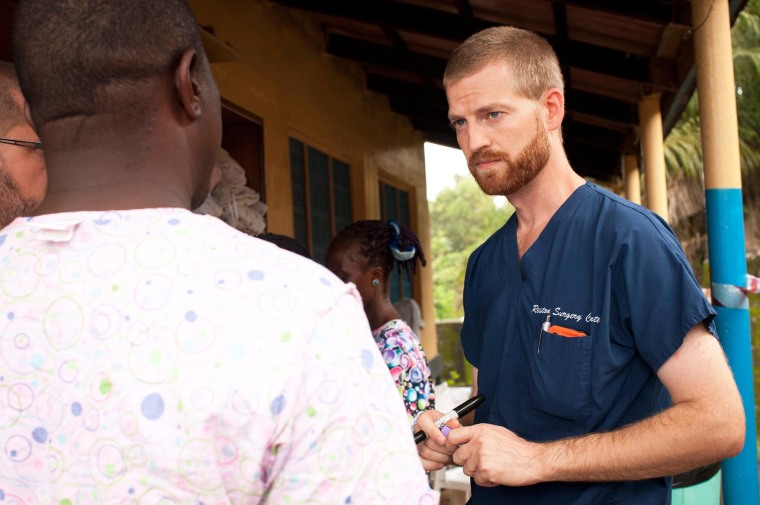Dr. Kent Brantly has now donated about a gallon of his own blood to other Ebola patients: medical missionary Dr. Rick Sacra and NBC freelance camera operator Ashoka Mukpo, and most recently Dallas nurse Nina Pham.
Patients who have recovered from Ebola have blood chock full of antibodies to the virus. Doctors hope that it can help kick-start the immune systems of patients fighting a new infection.
So why not give blood to everyone?
It’s sheer luck that Brantly has been a match for all three. Another Ebola survivor, missionary Nancy Writebol, offered blood to Thomas Eric Duncan, but it wasn’t a match. Duncan died last week.
The use of what’s called convalescent serum — blood from survivors of Ebola — is also controversial. It’s not clear whether it helps patients recover, although Brantly also received serum, in his case from a boy he treated in Liberia.
Sacra recovered, but he also got excellent supportive care and an experimental drug. Mukpo is on the mend, although he is not out of the woods yet.
"We really don't know whether the convalescent serum is working in helping to protect these patients or not at this time," Thomas Geisbert, an expert at the University of Texas Medical Branch who's helped test many Ebola treatments, told NBC News.
The World Health Organization complains that there is a black market for blood in some parts of West Africa affected by Ebola.
Serum, which is blood with the red blood cells removed, contains the antibodies that fight all sorts of attackers, such as viruses and bacteria. If someone’s recently recovered from an infection, they’ll usually have loads of antibodies that specifically recognize whatever caused the infection.
“ZMapp, ramped up, in my opinion, is the treatment of choice."
The same is true with Ebola. But serum, just like whole blood, also carries blood type — A, O, B and AB. And just as with whole blood, giving someone serum of the wrong blood type can cause a serious and often deadly reaction.
Is there a way to make a “universal” donor? Is there some way to make blood that doesn’t react with anyone’s blood?
That’s what the makers of the experimental drug ZMapp are trying to do. ZMapp is made using three of the antibodies that specifically target Ebola. It’s been tried in seven people. No one knows if it helped — you need to test a drug in many people to know the answer.
But in tests in monkeys, it’s been shown to work well, and it rescues even monkeys that are already sick. “This is pretty darn good,” Peter Jahrling, an expert in drugs and vaccines at the National Institute of Allergy and Infectious Diseases, told a symposium on Ebola on Tuesday.
And that’s a better record than using serum has. No one knows if using convalescent serum helps, and tests on monkeys suggest that using serum does not help them survive Ebola infection. Plus it’s dangerous to use serum in the field, says Jahrling.
ZMapp, made by California-based Mapp Biopharmaceutical, may be the scarcest drug in the world right now. There are no doses available. Two of the antibodies are made using close relatives of the tobacco plant, and a third is made in Canada. It’s a process that takes time, and before the epidemic started in West Africa, there was no real rush to develop it.
“ZMapp, ramped up, in my opinion, is the treatment of choice,” Jahrling told the symposium held at Johns Hopkins University.
